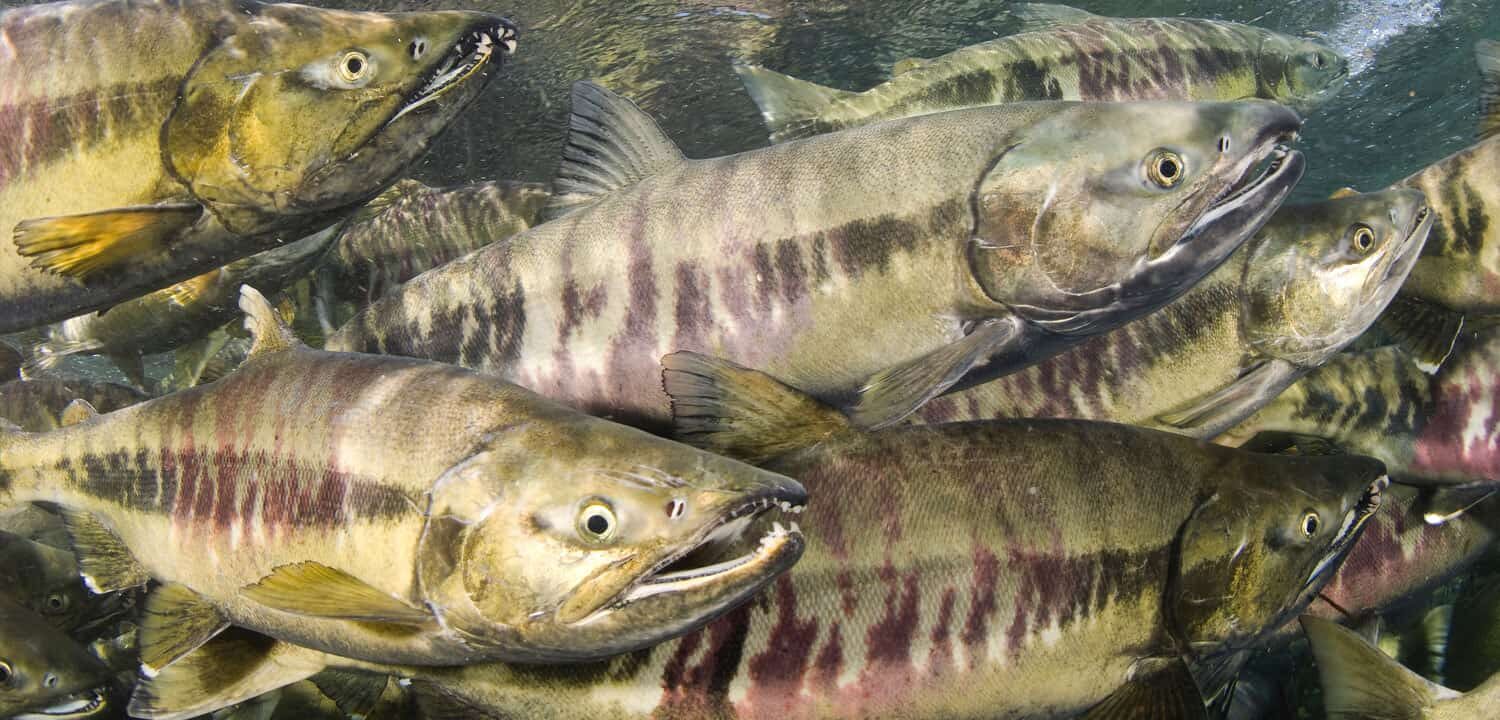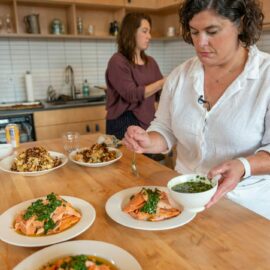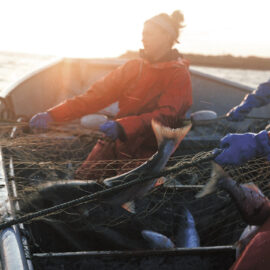For fans of wild salmon, it’s hard to know what’s the right choice in a restaurant or at a store. Here’s why sustainable seafood chef Rob Clark loves Harrison River beach-seined keta (chum) salmon.
If your first thought about wild salmon is “delicious,” your next might be the image of big silver fish netted out at sea. It’s a common train of thought in marketing. If fresh is best, the concept goes, then surely what you want is a plump ocean salmon, caught before the rigors of home river migration.
But according to celebrated British Columbia chef Rob Clark, that idea misses the boat. And not just when it comes to sustainable seafood. It’s also about flavor.
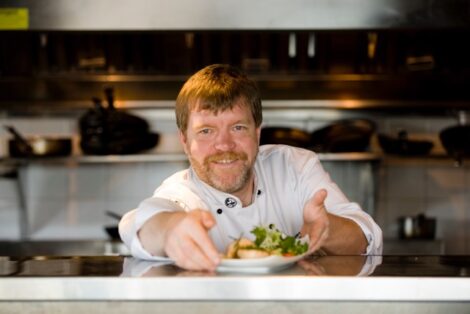
“The world perceives ocean-caught salmon as somehow better than river salmon,” says Clark, the now-retired head chef of such past and present Vancouver seafood institutions as C Restaurant, Raincity Grill, and the Fish Counter. “But the strength of wild Pacific salmon are the varieties and textures from river to river. For a chef, it’s like working with a full palate.”
And that culinary nuance gets lost at sea. Marine fishers operate in “mixed-stock” fisheries, where countless migrating salmon stocks mingle before heading to home rivers up and down the Pacific coast.
Contrast that with rivers, where fishers can gauge exactly which salmon runs they’re catching. Here, selective fishing gear types like pound nets and fish weirs are gaining traction. In-river “terminal fisheries” create an opportunity for chefs like Clark to showcase, say, sockeye salmon returning to Lake Babine versus the Fraser. And there’s an environmental justice piece to shifting commercial fisheries inland, where the fishing traditions of Indigenous salmon communities like the Sts’ailes First Nation of the lower Fraser River valley have been restricted—even criminalized—for generations.
“My goal now is to help every river product, especially one harvested in a sustainable way, earn the respect it deserves,” says Clark. “And I could not make a better product to embody this approach than Harrison River beach-seined keta.”
My goal now is to help every river product, especially one harvested in a sustainable way, earn the respect it deserves. And I could not make a better product to embody this approach than Harrison River beach-seined keta.”
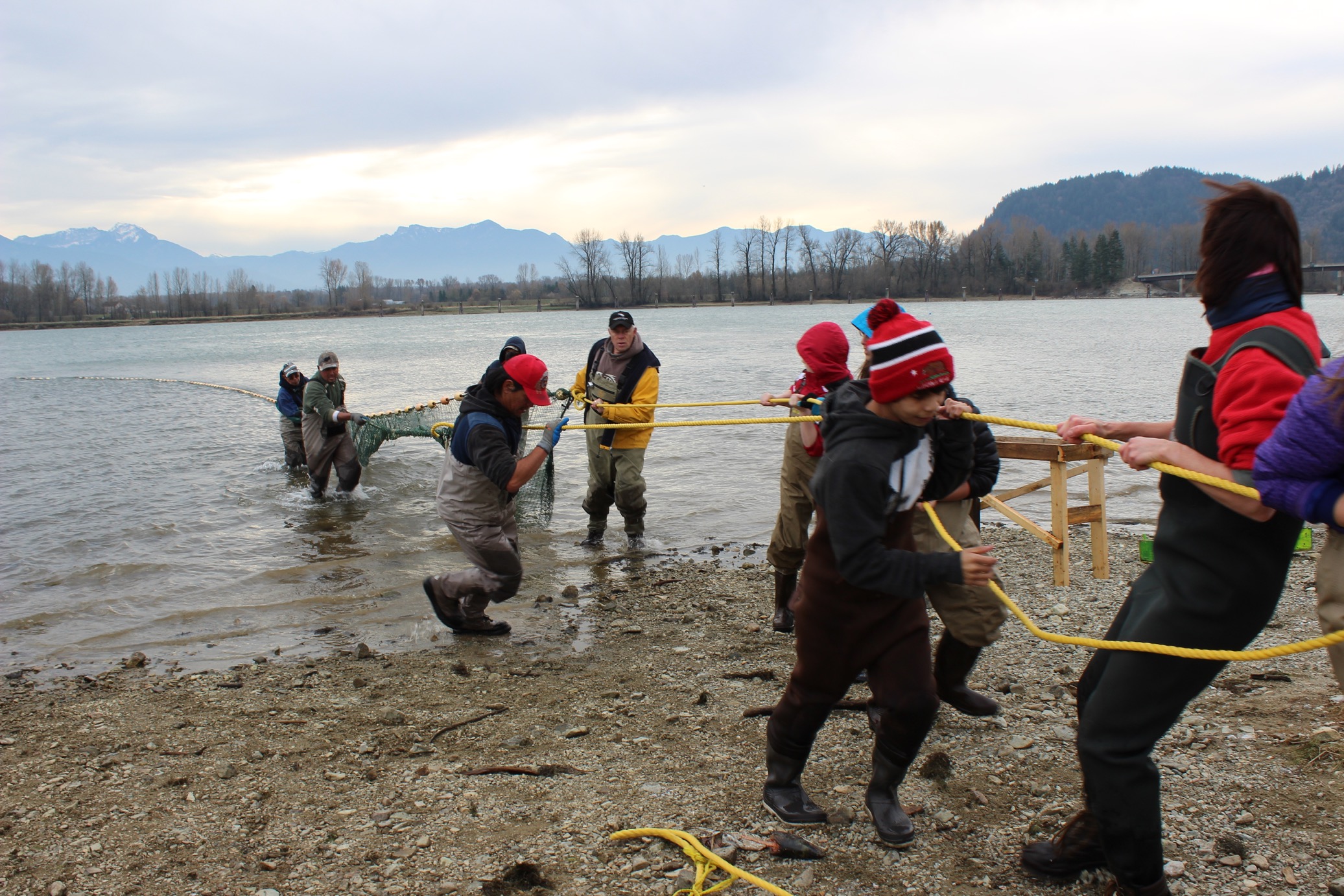
Beach seining dates back thousands of years on B.C. rivers like the Koeye. And while it doesn’t appear in the fishing stories of Sts’ailes elders—unlike fish weirs, spears, and gaffs—it does have new formal approval from Canada’s Department of Fisheries and Oceans as a selective fishing practice.
“Beach seining is a new method for us. We’ve evolved, kept up with the tools that are used nowadays,” says Sts’ailes Chief Ralph Leon (Sah-ahkw). Though, he adds, “the nets are really tough on your hands.”
An upside is that it brings his community together, literally. Operating a beach seine takes a village, of sorts: first to drop a broad net into a churning pool of fish, and then to pull it like hell to the shallows, where bycatch fish like steelhead can be safely netted and released.
Operating a beach seine takes a village: first to drop a broad net into a churning pool of fish, and then to pull it like hell to the shallows, where bycatch fish like steelhead can be safely netted and released.
“Back in the day, we were able to pick and choose what species we wanted. Our grandparents would tell us what to catch, and we’d get scolded if we brought home the wrong kind, because our elders knew what was going on with the salmon,” says Chief Leon. “Those were the glory days. It was a time when our people were very healthy. Now, we’ve got to work together to save our chum. The health of my grandkids depends on it.”
Chum salmon—often sold in stores as keta—is a productive run on the Harrison River, a wide, slow, glacier-fed tributary of the lower Fraser. For the past few years, the Sts’ailes and Scowlitz First Nations have brought that run to market with River Select, a seafood processor and retailer that works exclusively with First Nations-operated selective, terminal fisheries. Harrison Select, the brand name of their fresh, canned, and candied keta salmon, brings in revenue for the Sts’ailes and Scowlitz communities. More importantly, it’s an opportunity to renew their historic stewardship of the river.
It’s early days for this young venture, says Sts’ailes Councilman Kelsey Charlie (Tixweltel), and his community is still debating the merits of launching a commercial fishery—especially with the strain on salmon runs throughout the North Pacific.
But if there is one clear message that Charlie would send out into the world, it would be that the Sts’ailes First Nation has salmon stewardship woven into its DNA. Who better to manage this precious resource than the people who have done so successfully for thousands of years?
“Our law that has governed this land for so many years, we still honor it. We still carry out all the ceremonies and rituals that have so much meaning for us,” says Charlie. “We are still stewards of the land. It plays an integral role not just in our everyday lives, but in our potlatches and the food we share. It all comes from this land.”
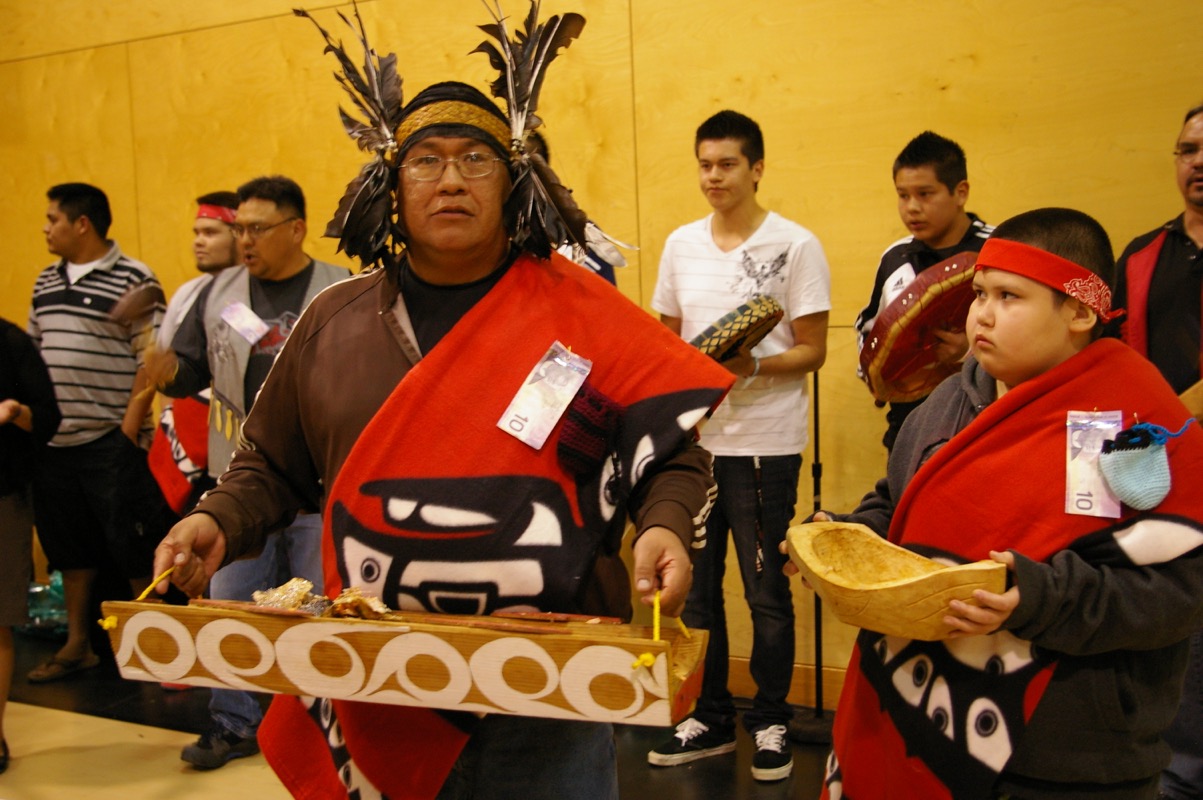
For Chief Leon, it’s heartbreaking that many of the salmon his community honors every year, starting with the first salmon, spring Chinook, never make it home to the Harrison. While the Harrison’s chum runs might be fairly healthy, not all salmon bound for the Fraser River watershed are so lucky. Fraser spring Chinook in particular are at risk, due to factors that include predators, pollutants, and poorly monitored fisheries.
With selective fishing practices, these runs can be protected. Chef Clark visited a Harrison River beach seine a few years back and has vivid memories of the day’s bycatch: two wriggling steelhead that he helped to release back into the river, unharmed.
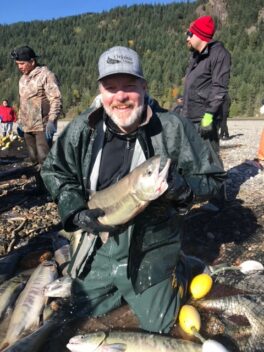
“It doesn’t get more beautiful than that,” Clark says. And he and Chief Leon also agree on another point: this river fish is delicious.
“The chum that we fish are phenomenal for smoking, or canning, or for making candy,” says Chief Leon. “You can watch football or hockey and eat that candy all day.”
Clark would add another recipe to that list. “I’ve made fish and chips out of every salmon species out there, and the Harrison River keta is the best you’ll ever have—meaty like halibut, but with a lot more taste.”
Before he retired from Vancouver’s Fish Counter, Clark upgraded the restaurant’s fish and chips to keta and saw demand soar for this crowd-pleasing comfort food. Now in his home kitchen, he’s still experimenting with flavors, in his lifelong quest to expand the palates and passions of diners.
“River salmon just needs someone to highlight its qualities, and chefs play that role as food influencers, over and over,” Clark says, and laughs. “Otherwise, we’d all still be eating iceberg lettuce, right?”
River salmon just needs someone to highlight its qualities, and chefs play that role as food influencers, over and over. Otherwise, we’d all still be eating iceberg lettuce, right?”
WHAT IT IS: Harrison Select Beach-Seined Keta is the market name for chum salmon products harvested by the Sts’ailes and Scowlitz First Nations of British Columbia and processed and retailed by River Select.
WHY IT’S KEY: In-river “terminal fisheries” allow fishers to know what they’re catching and use selective fishing methods that minimize harm to vulnerable or endangered species. Beach seining, a selective fishing practice approved by Canada’s Department of Fisheries and Oceans, is used by the Sts’ailes and Scowlitz First Nations in their Harrison River fishery.
WHERE TO FIND: River Select products are available for online purchase. Look soon for new Spring 2021 products from a range of First Nations selective terminal fisheries, including smoked canned keta and candied pink salmon from Harrison Select.
